 |
|
 |
|
Buckinghamshire Local History Network
2018 ANNUAL CONFERENCE AND FAIR
Uncovering the buried past
beneath the HS2 rail line
TWO HUNDRED PEOPLE at the 2018 BLHN Conference – a 'full house' – listened to the first reports on the
archaeological investigations ahead of the HS2 high-speed rail line at The Oculus in Aylesbury on 29 September 2018.
Five of the seven speakers came directly from the archaeology teams responsible for sites along the route that the
HS2 rail line will take across Buckinghamshire.
THE SPEAKERS
-
First speaker was Eliza Alqassar, who set out the groundwork for the conference on behalf of the
Buckinghamshire County Council Archaeology Service, illustrating the key archaeological sites along the line
and surveying the range of archaeological periods involved. From the Pleistocene Ice Age deposits at Hartwell to the medieval churchyard
and church ruins at Stoke Mandeville she identified how HS2 archaeology could increase our understanding of how local people had lived
in Buckinghamshire.
Places affected by construction of the line >>
- Jay Carver, Lead Archaeologist for Fusion and HS2, addressed the overview revealed by the unprecedented large-scale surveys
that have been made along the line. Geophysical and LiDAR surveys have already indicated previously unknown settlements from Bronze Age, Iron Age
and Roman periods. If these are correlated with the geology of the Chilterns, the Vale of Aylesbury and northern Bucks this reveals how early
people interacted with these very different landscapes.
- Richard Brown, of the COPA archaeology team, gave the conference a tour of the huge amount of trial-trenching that had been
done during the summer months. He focused particularly on new revelations about the Roman township at Fleet Marston - and, most interesting,
an apparently regular pattern of Roman farm settlements along the line of HS2.
- Dr Paul Stamper, of the Connect archaeology team, provided a historical account of the medieval settlement
at Doddershall - now a series of deserted earthworks. The conventional view is that the villagers were evicted in favour of sheep, and indeed
this is the view set out in a report written for Cardinal Wolsey in 1517. But an estate plan from 1587 shows some village houses still standing.
The HS2 archaeologists are about to excavate. Will this reveal more?
Doddershall: The society's survey >>
- Heritage specialist Andrew Harris traced the history of the old St Mary's Church at Stoke Mandeville back
900 years to Norman England. Today this is a pile of stones in the way of HS2. But he argued that Its narrow semi-circular chancel arch
may date the church even earlier, to Saxon times. Guy Hunt of LP Archaeology told how work done around the church site
so far has revealed indications of earlier Roman occupation. The next stage is to remove the rubble and find what's left of the church itself.
The society's work at Stoke Mandeville old church and churchyard >>
- Jay Carver returned as final HS2 speaker with an account of how the HS2 archaeologists are using new
scientific methods - aerial reconnaissance and large-scale magnetometry for example - over much larger areas, and with significant results.
- Finally, the Bucks Archaeological Society's Julian Hunt wound up the conference with an account of
the coming of the railways to Buckinghamshire for the first time in the 19th century - a tale of business rivalry and a veritable cornucopia of steam!
|
|
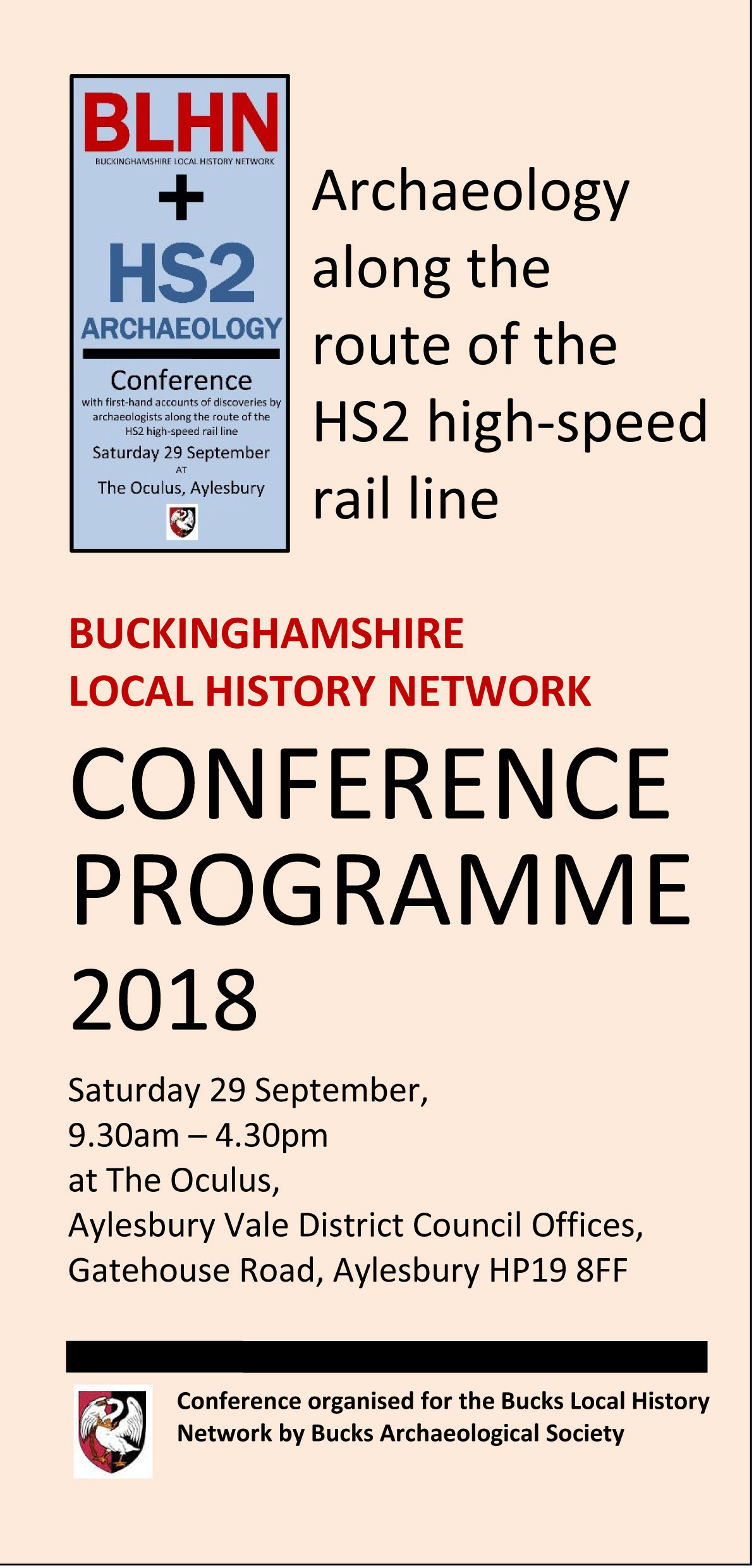 The 2018 conference programme
The 2018 conference programme
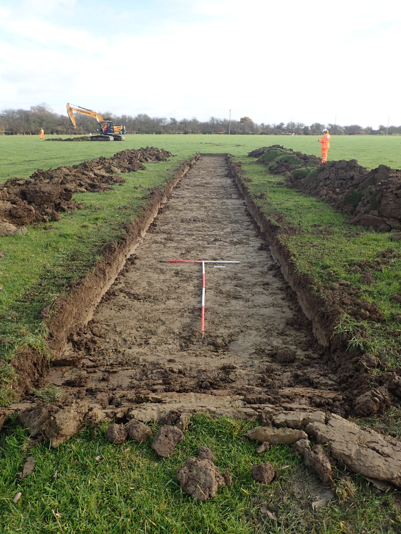 Trial trenching at Doddershall.
Trial trenching at Doddershall.
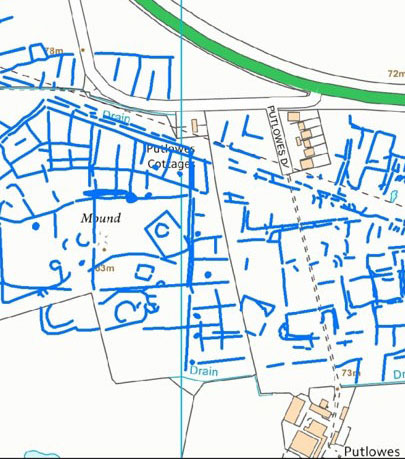 Fleet Marston geophysical survey.
Fleet Marston geophysical survey.
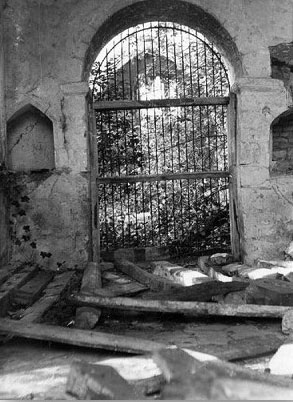 Stoke Mandeville chancel arch.
Stoke Mandeville chancel arch.
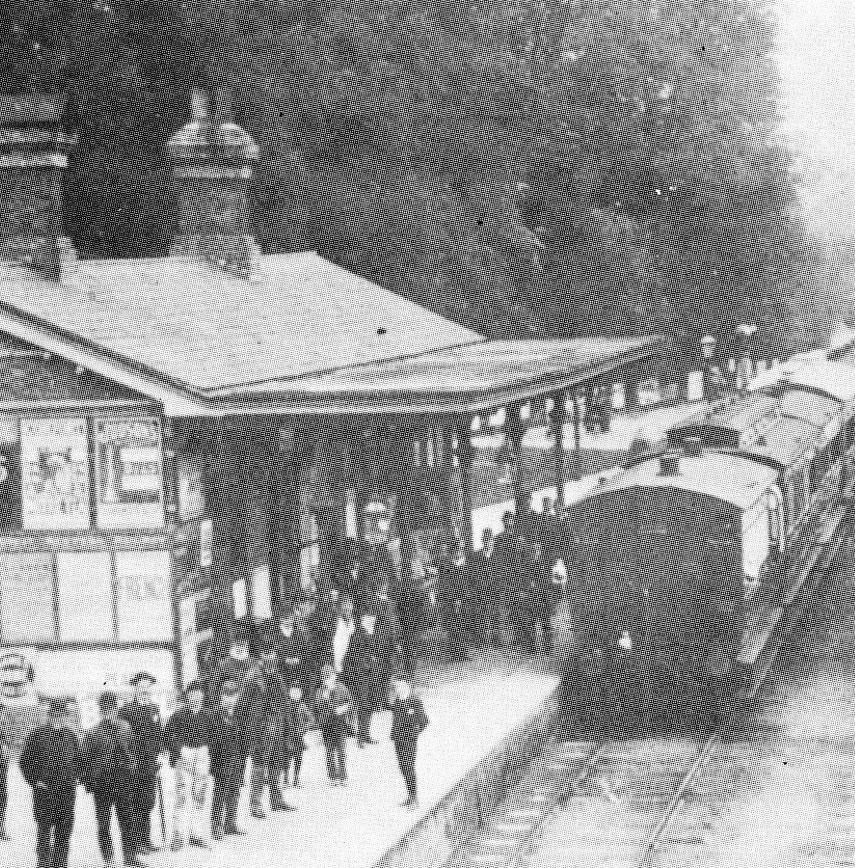 Aylesbury station, opened 1863.
Aylesbury station, opened 1863.
|
THE SOCIETY DISPLAYS
Conference participants were also able to view displays and bookstalls from 13 local archaeological and history societies and
organisations:
- Bucks Gardens Trust,
- Bucks Genealogical Society,
- Centre for Bucks Studies,
- County Archaeology Service,
- Fusion: Archaeology for HS2,
- Haddenham Museum Trust,
- High Wycombe Society,
- Leighton Buzzard and District Archaeological and Historical Society,
- Marlow Archaeology,
- Tring and District Local History and Museum Society,
- Wing Heritage Group,
- Winslow History Project.
And of course the Bucks Archaeological Society, which, with its Active Archaeology Group, had played the central role in organising the conference.
|
 |

 The 2018 conference programme
The 2018 conference programme
 Trial trenching at Doddershall.
Trial trenching at Doddershall.
 Fleet Marston geophysical survey.
Fleet Marston geophysical survey.
 Stoke Mandeville chancel arch.
Stoke Mandeville chancel arch.
 Aylesbury station, opened 1863.
Aylesbury station, opened 1863.